Lining Sheet Pans
Sheet pans are a kitchen staple. You need them baking for cookies, cakes, rolls, and macarons! And when it comes to food prep, there is nothing better for cooking chicken or even roasting a whole turkey. (Click here for ten more ideas for using sheet pans!)
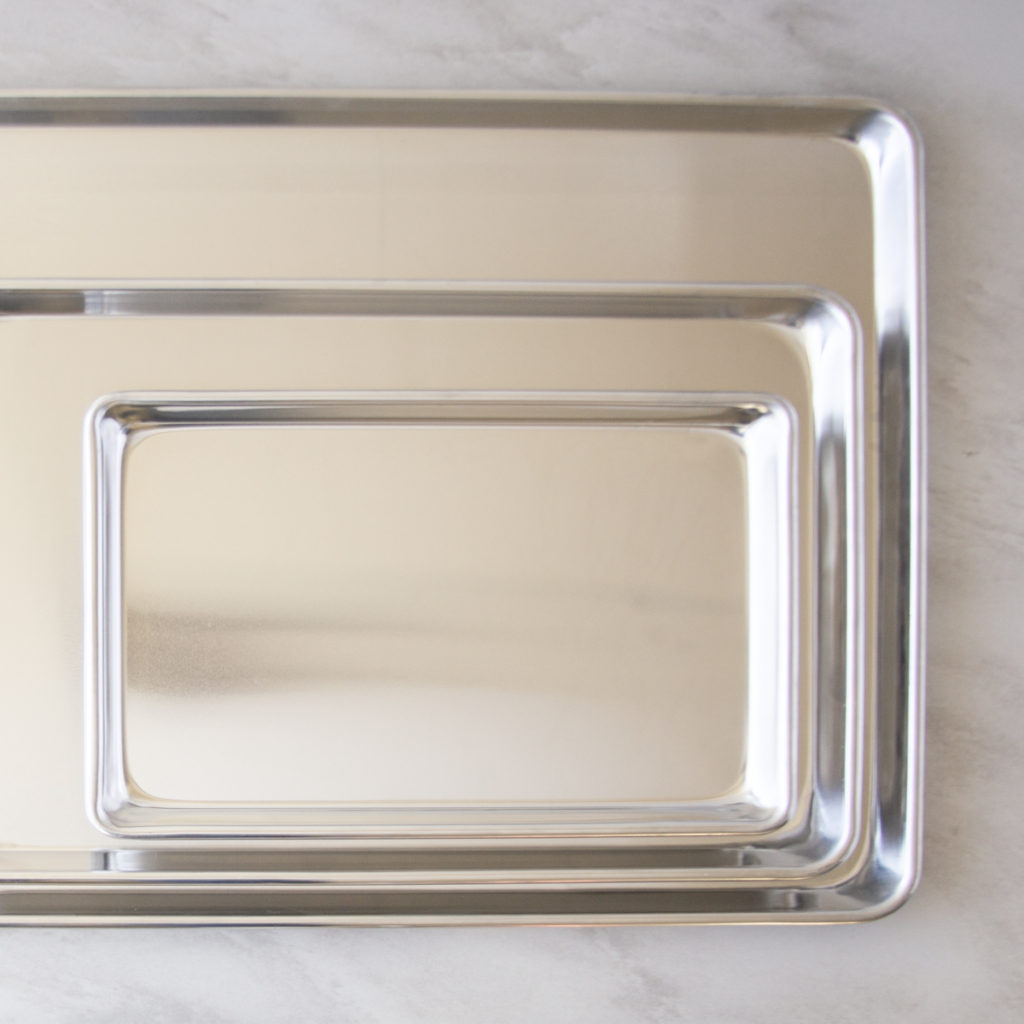
There are times when you want your food to cook directly on the surface of the pan. Cooking directly on the metal allows the edges of the food to become crisp and brown. Looking at you, roasted veggies!
But, there are also times when it is best to line the sheet pan. This serves a couple of purposes. First, a liner creates a nonstick surface without any added fats or oils. Also, the liner helps insulate the food, preventing over-browning on the edges. Last, liners make clean up a breeze and preserve your pans for years of use.
There are several products on the market for lining pans, but they generally fall into two categories: silicone liners and parchment paper.
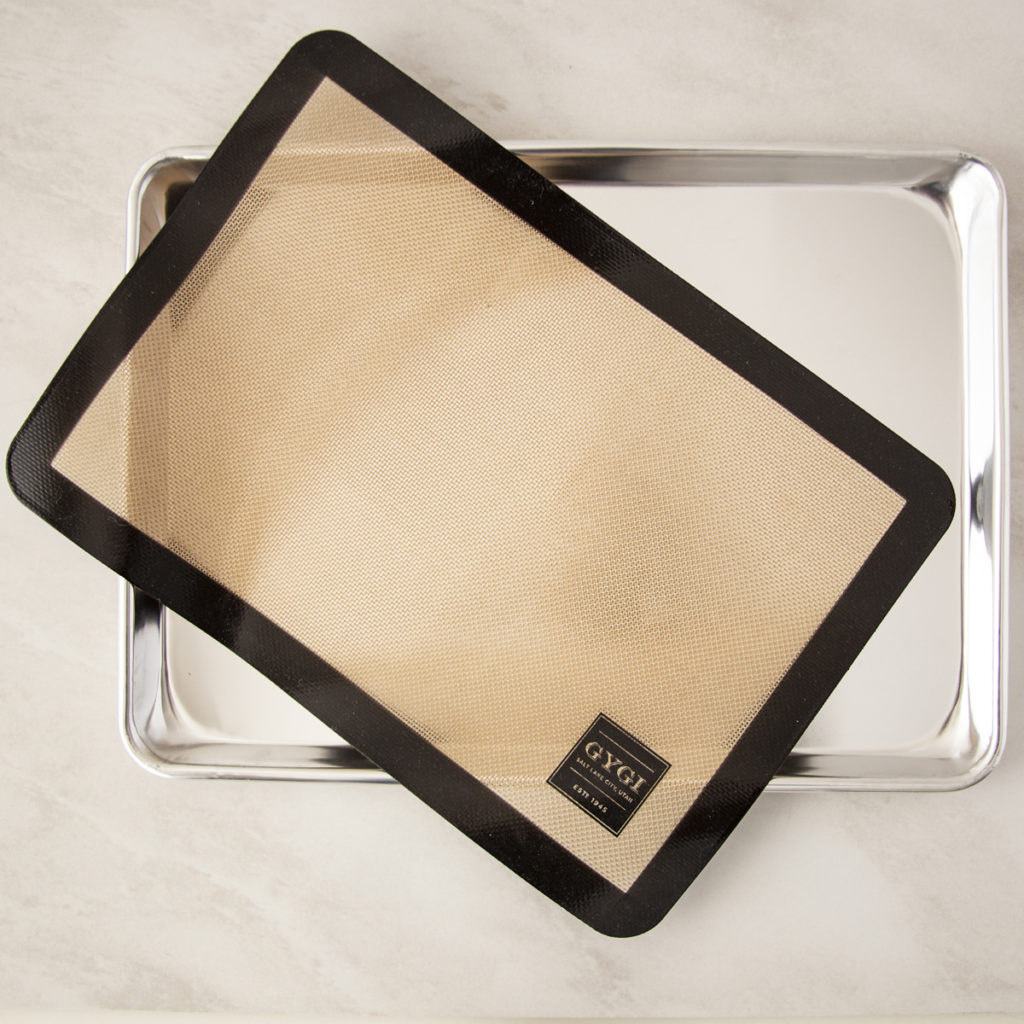
We conducted a few baking tests to find out which product performs best. We tested Gygi Silicone Mats and Gygi Precut Parchment Paper. We also took a poll on Instagram to find out what the Gygi Community prefers. Read on to find out what we learned!
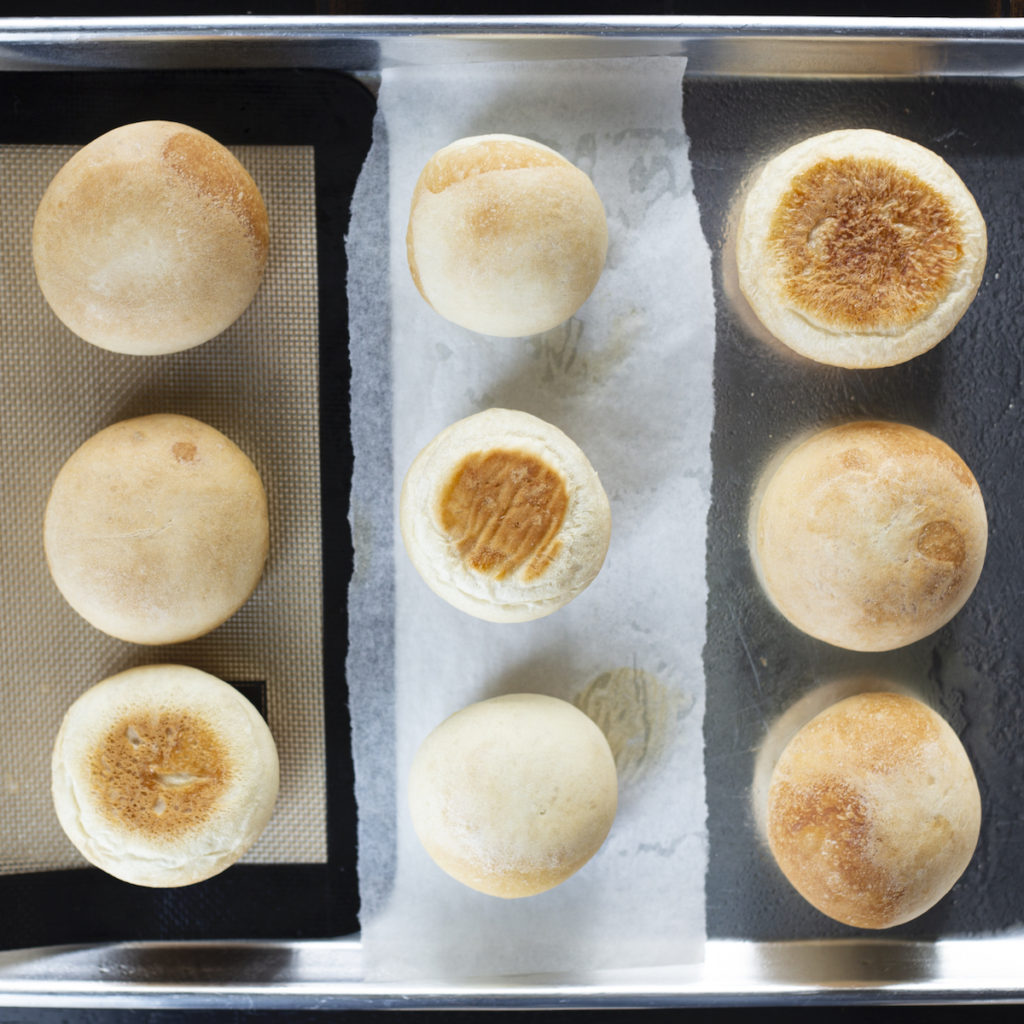
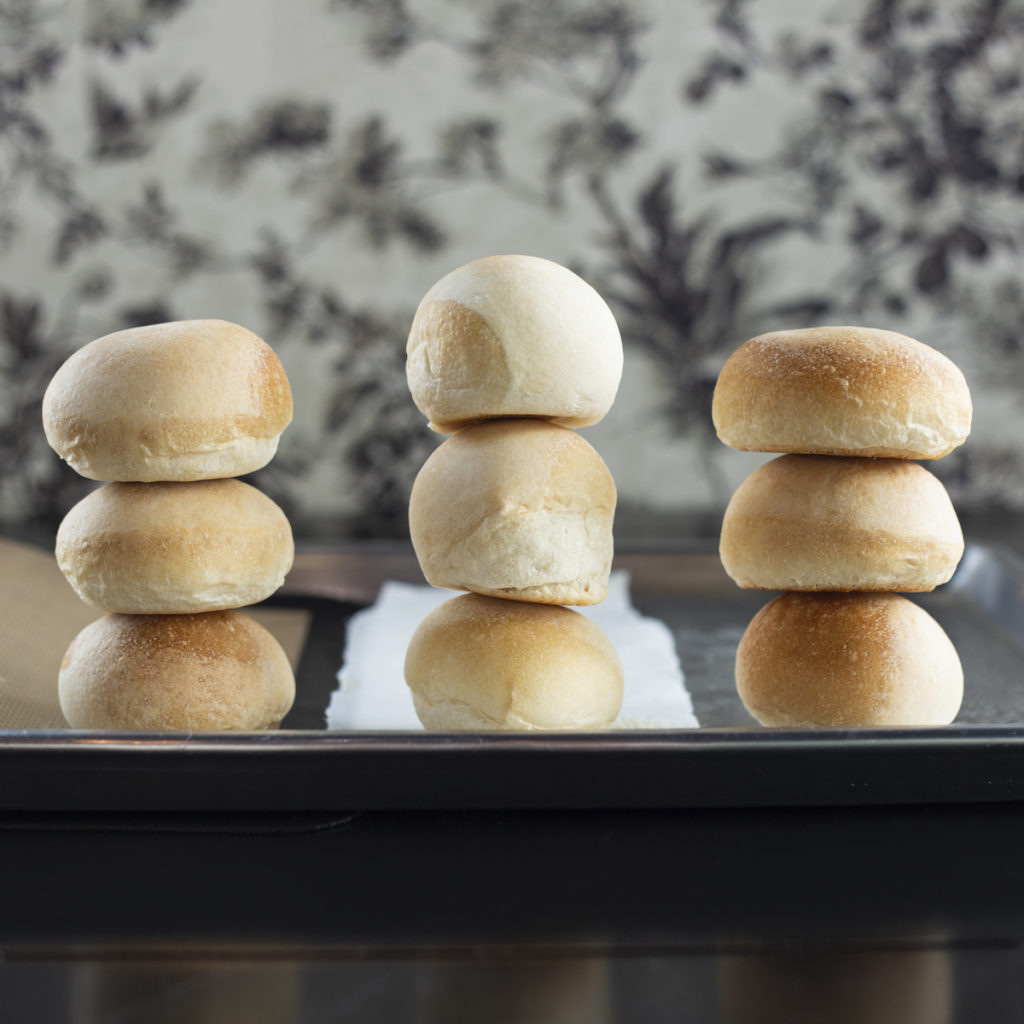
Silicone Liner
Silicone pan liners are thin, flexible sheets of food-grade silicone with a layer of fiberglass or nylon mesh to help conduct heat. They are generally oven safe up to 450 degrees Fahrenheit and can also be used in the freezer, but the specifics can vary by brand.
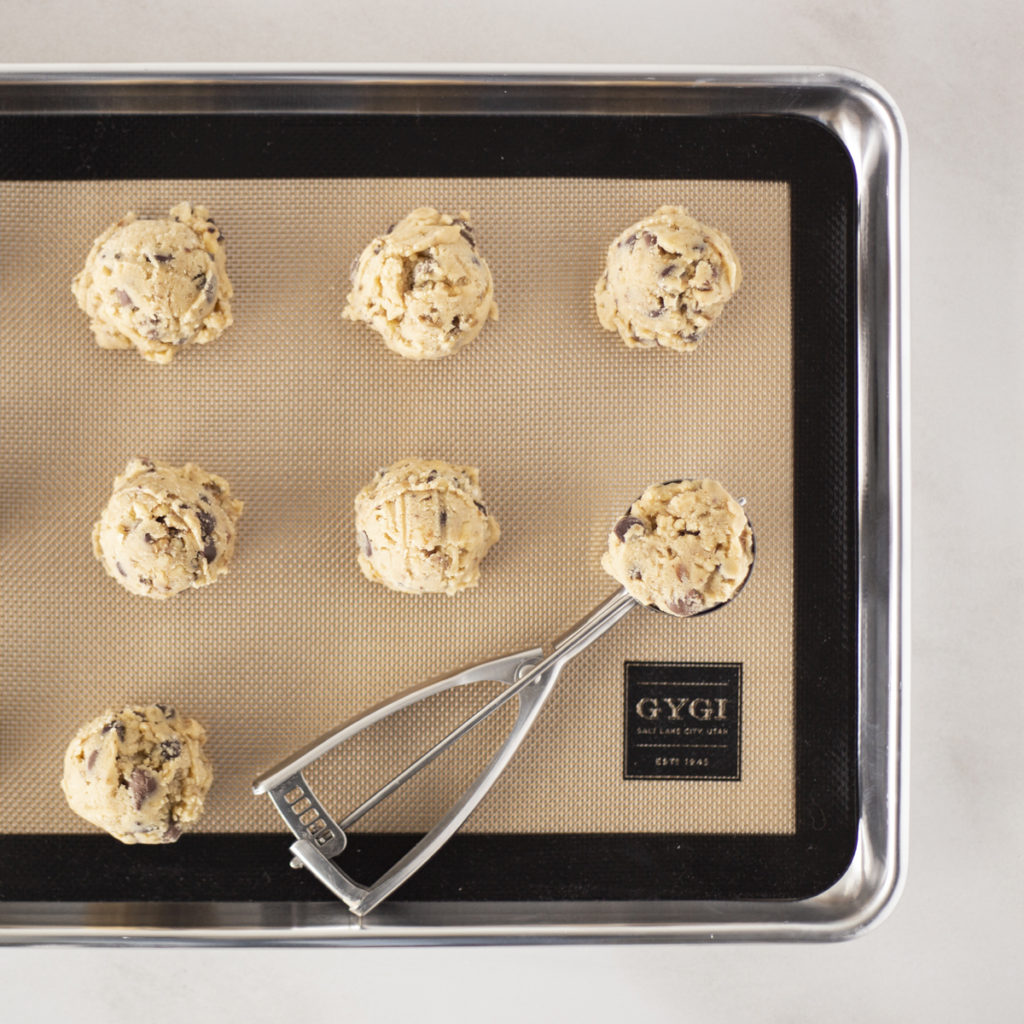
Cooks who use silicone liners love that they are reusable. A good-quality mat will last for decades! You can preserve the life of the silicone liner by avoiding sharp objects and washing thoroughly after each use.
The nonstick surface of a silicone liner is the perfect place to cool foods like caramel, brittle, homemade fruit leather, or chocolate dipped treats. These sticky foods peel from the surface once completely cooled.
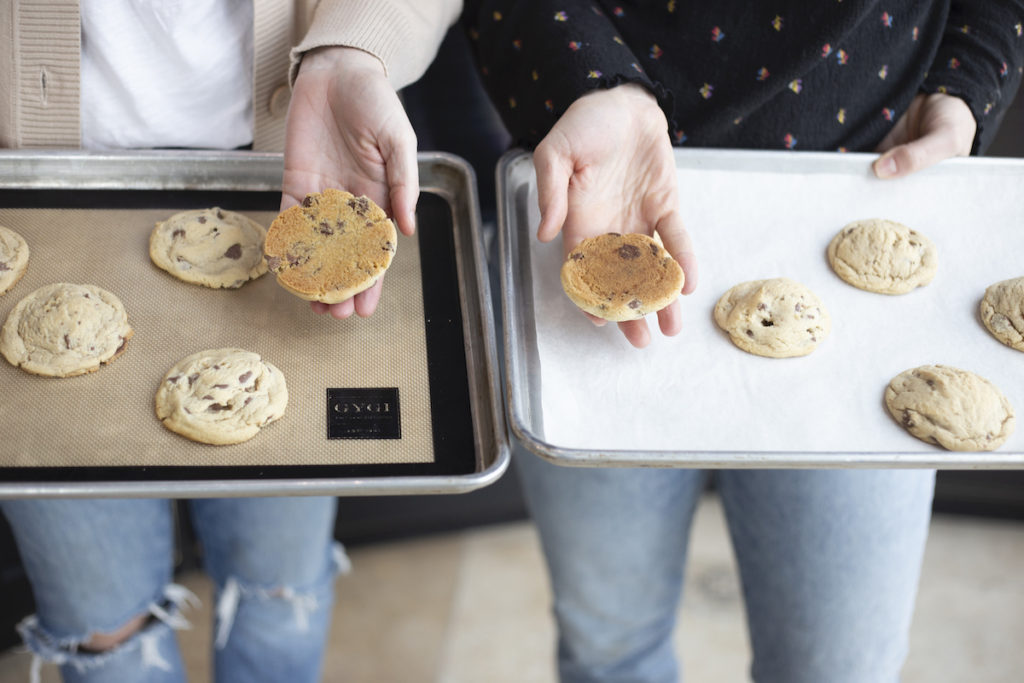
Silicone liners can also be used for baking. The layer of silicone slows browning, which is helpful for cake-like and soft cookies. Notice the bottoms of the chocolate chip cookies above. The cookies baked on the silicone were slightly less brown. They also spread a bit more than the cookies baked on the parchment.
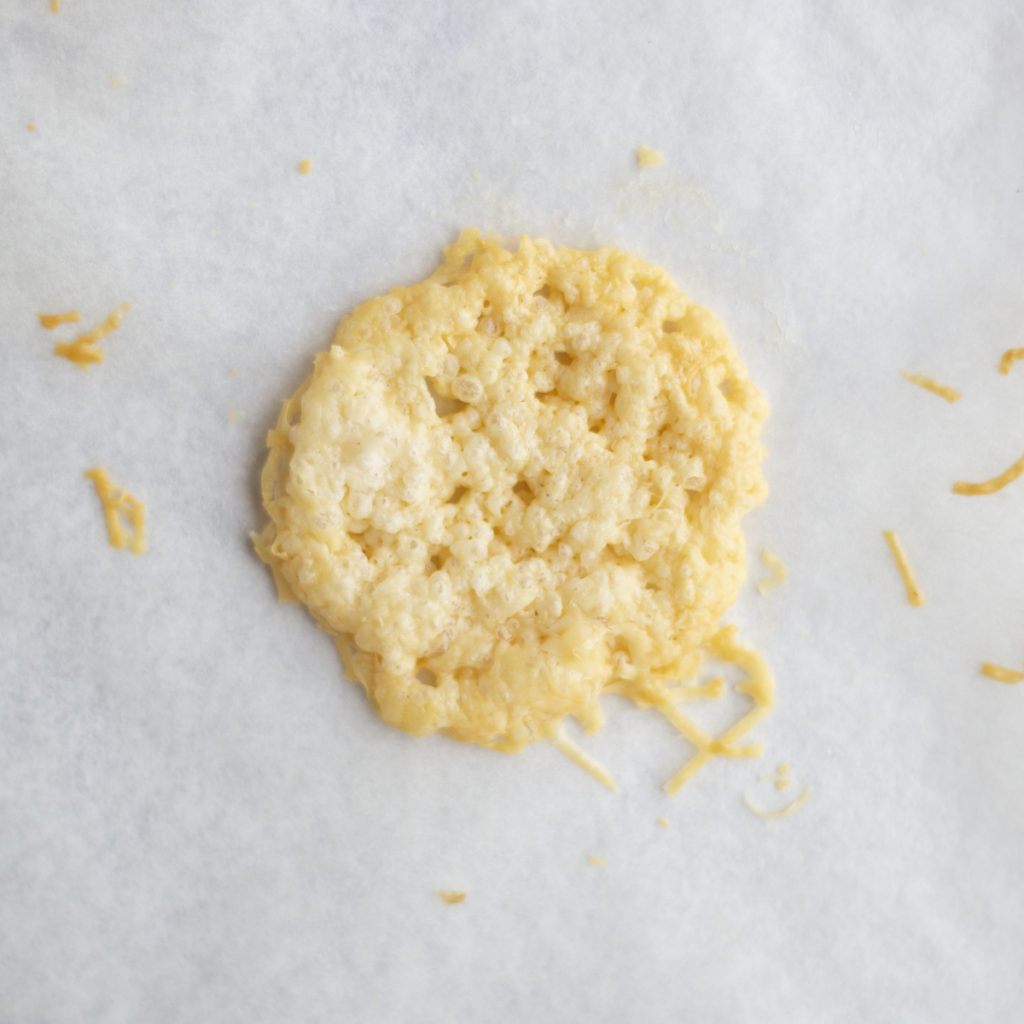
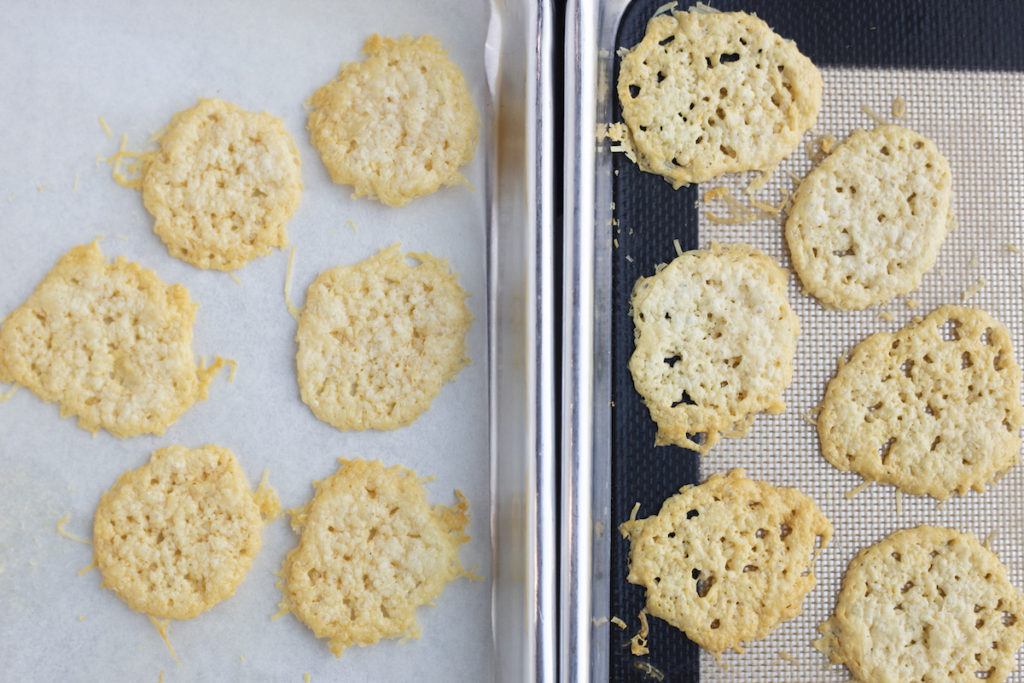
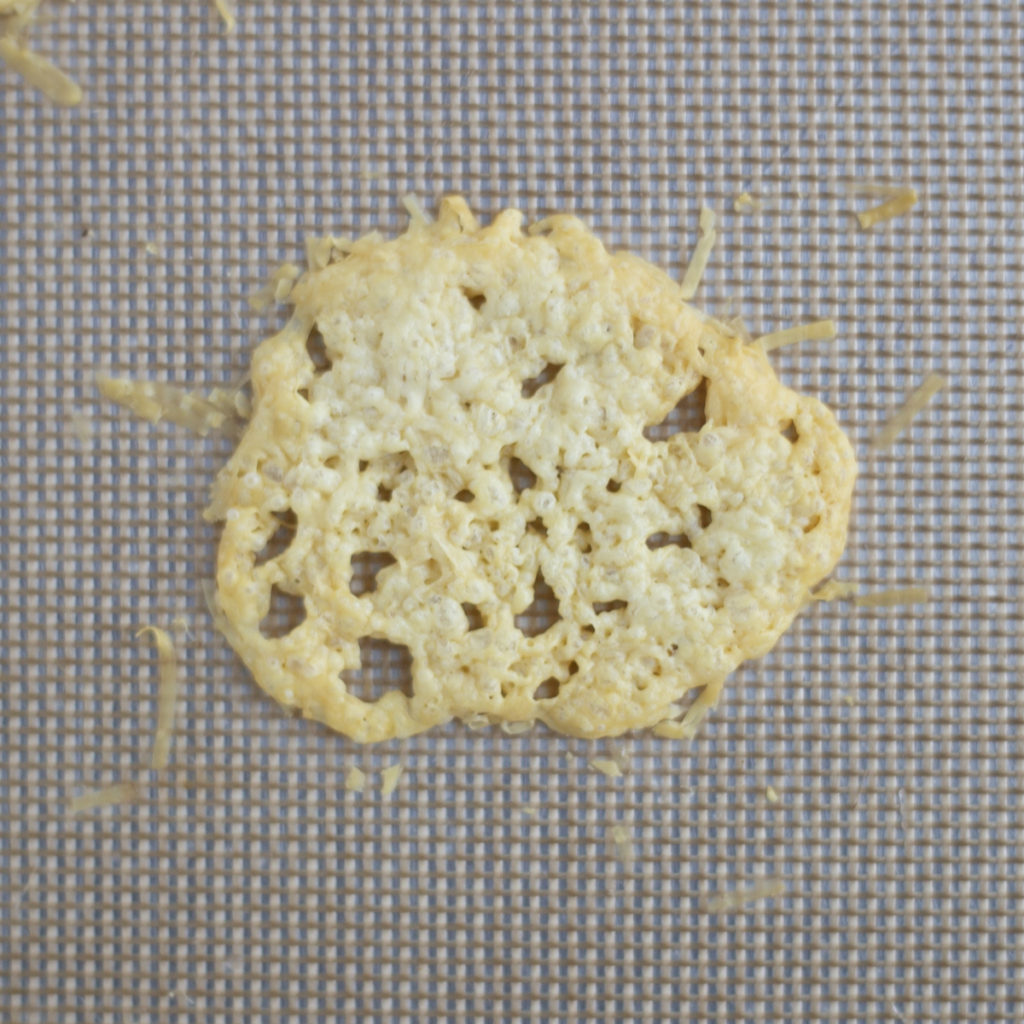
The slick, nonstick surface causes food to spread more than if it were baked on a plain pan or parchment paper. This is advantageous for something like a parmesan crisp, but less helpful for your favorite chocolate chip cookie. See the parmesan crisps above. The silicone crisps have spread more than the parchment parmesan crisps.
Another thing to note is that allowing your cookies to cool on a silicone liner may lead to a soggy bottom. Because the silicone is not breathable, the cookie will sweat and that moisture is reabsorbed into the cookie, which can cause it to soften. For this reason, it is advised to remove cookies from the silicone mat before they cool completely.
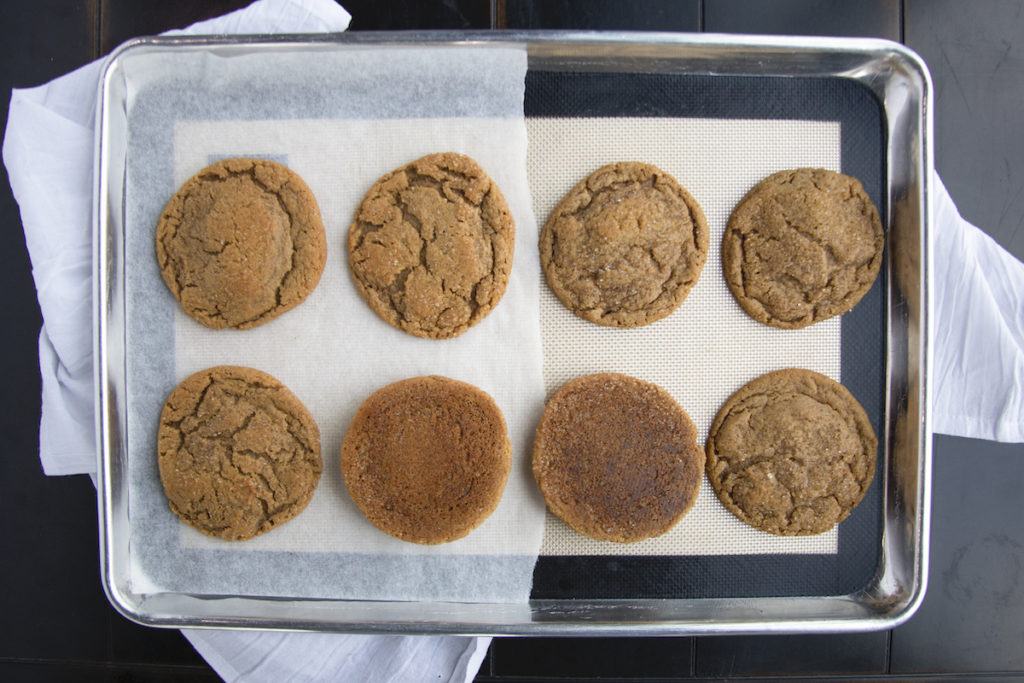
We did find that these gingersnaps appear more browned on the silicone than the parchment. These cookies are rolled in sugar before baking, and the silicone surface crystallizes the sugar more than the parchment. This affect was evident on the gingersnaps and benne wafers.

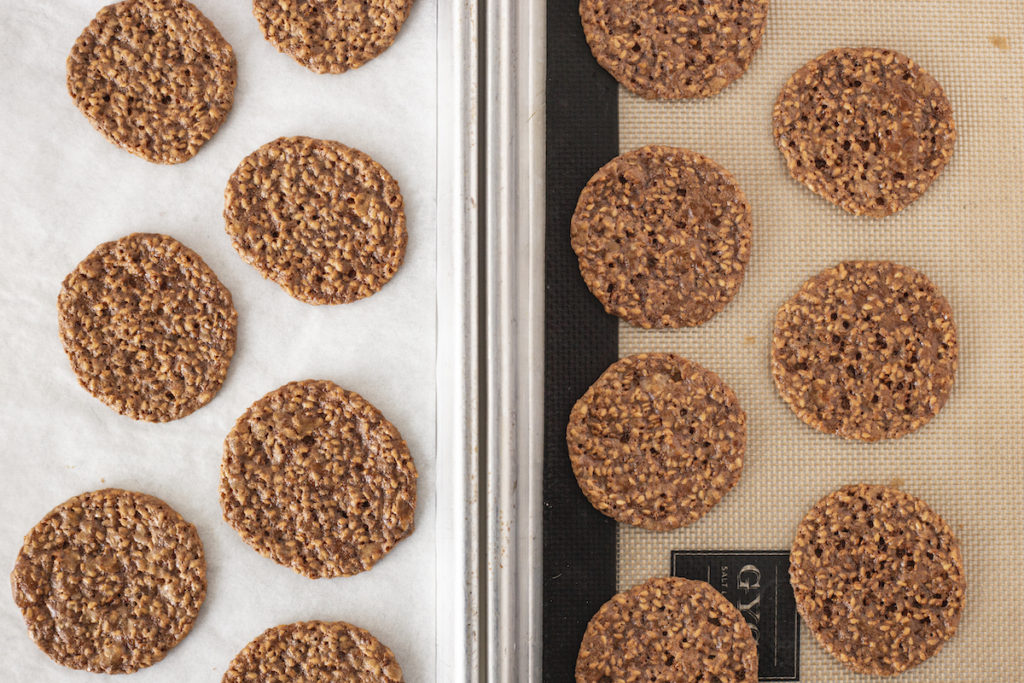
Some bakers complain that baking on silicone resulted in undesirable cookies, but the primary complaint seemed to be the amount of time needed to care for them. Adding another item for washing feels overwhelming. Plus, they are a bit awkward to clean & dry. Also, they absorb strong odors – so your latest batch of cookies may taste a bit like a previous batch of parmesan crisps.
Also, when purchasing a mat, make sure it is intended for baking. You can also find mats that are not heat resistant. These mats are intended for rolling out pastries or fondant and should not be used in the oven.



Silicone liners are preferred for candy makers and eco-conscious cooks. If you’re happy with the results that your silicone liners are producing, they are a great option for committed cooks and candy makers. They are worth the investment for years of use. You’ll love the dependable and budget-friendly silicone pan liners we sell at Orson Gygi. Check them out here.
| SILICONE PROS | SILICONE CONS |
| non stick | washing after each use |
| heat resistant | leads to spreading |
| reusable | size not adjustable |
| less browning | costly initial investment |
| sturdy for transportation | may need multiple |
| absorbs odors |
Parchment Paper
Parchment paper is paper that has been coated with a thin layer of silicone, which makes it nonstick and heat resistant. This product is considered heat safe up to 450 degrees Fahrenheit. When used at temperatures above this (for artisan bread), the paper will begin to brown. This makes the paper more brittle and fragile, but it remains nonstick. Just take care to remove from the oven before the paper begins to singe.
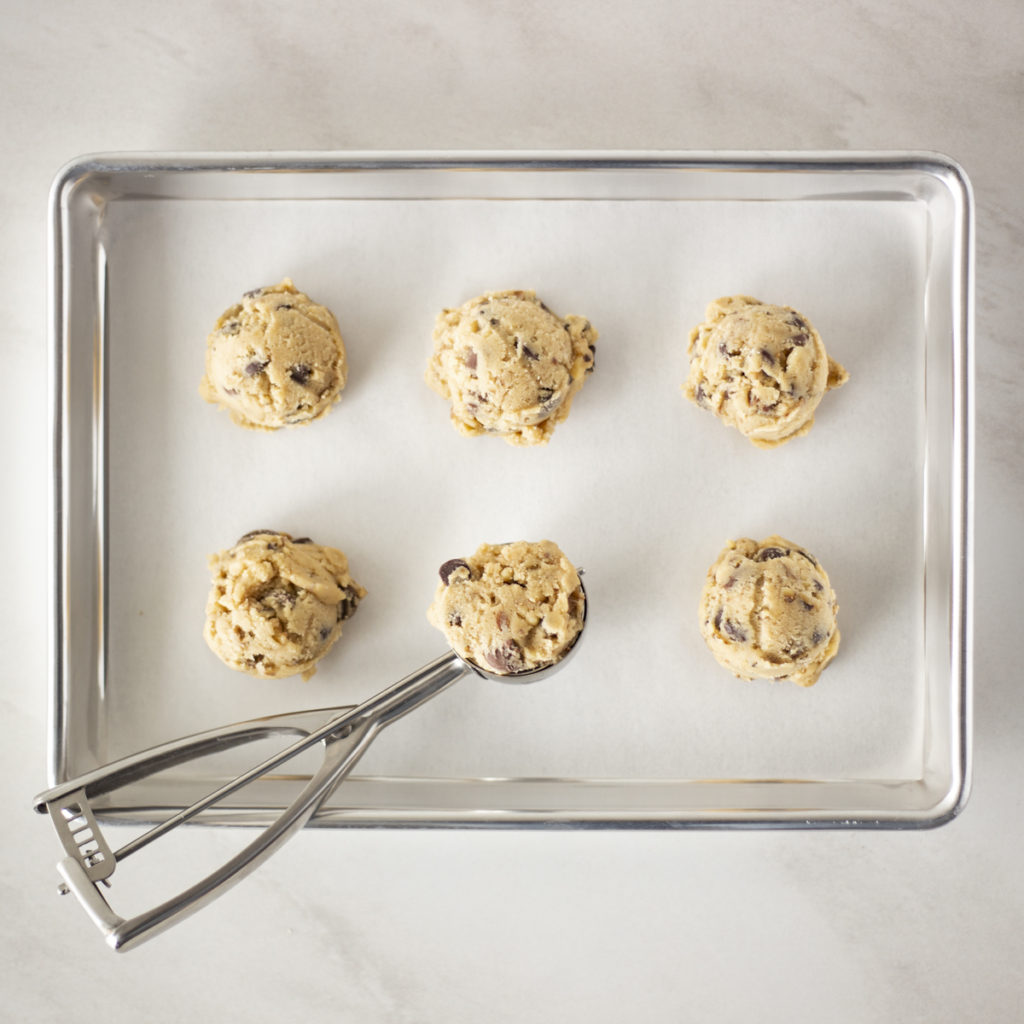
Parchment paper is the most convenient option for lining your pans, especially if you use precut sheets! Lining is simple and clean up is even easier. Just toss the used sheet in the trash. This convenience is preferred by many bakers.
If you’re concerned about single-use waste, you can reuse sheets of parchment if they are not browned or coated in sticky sugar. Baking 3-4 batches of cookies on a single sheet of parchment is a great way to make the product last longer.
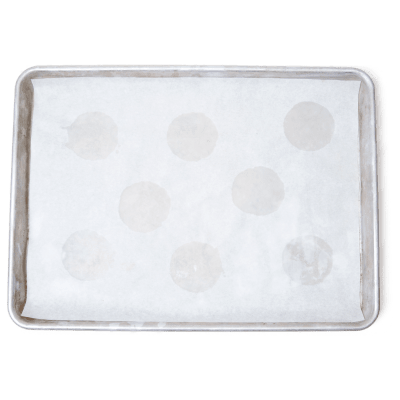
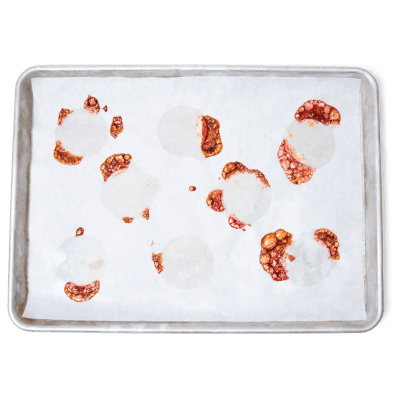
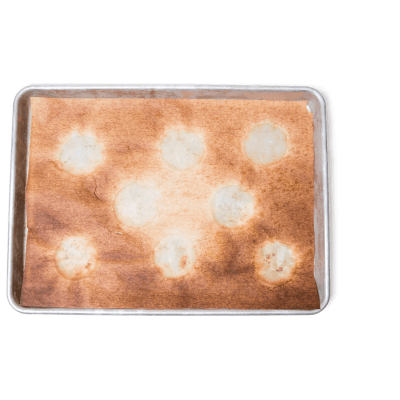
Another advantage of parchment paper is the ability to cut and shape parchment to a variety of sizes. So, whether you’re using a sheet pan, a square brownie pan, or a round cake pan, you can trim a piece of parchment to the perfect size.
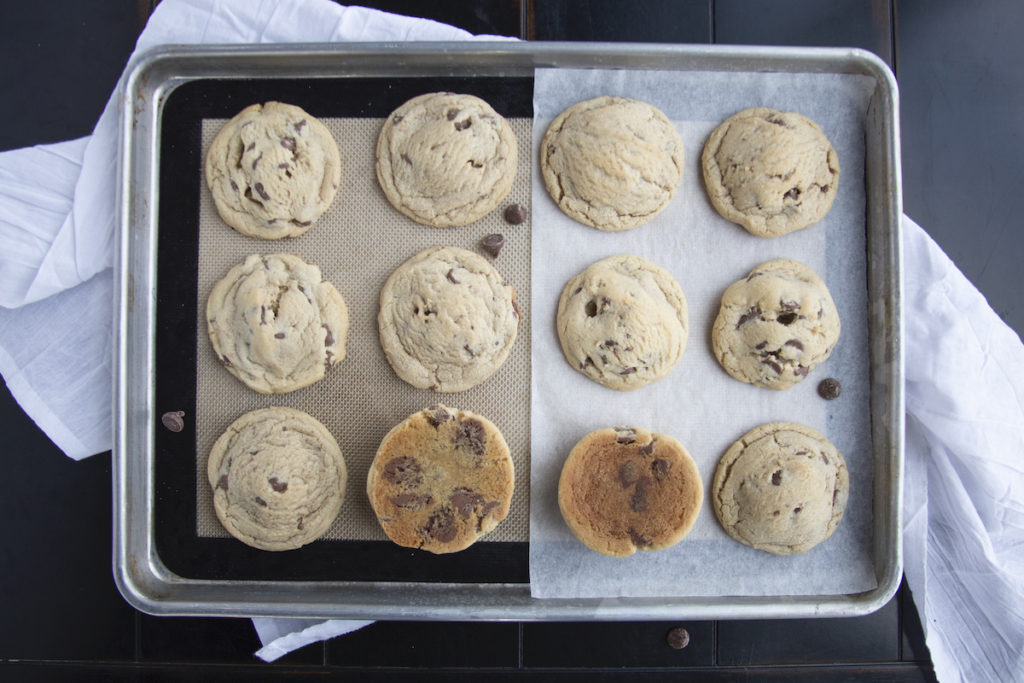
Now, when it comes to baking, cookies may experience more browning on a sheet of parchment paper. The thinner paper allows the cookies to heat more quickly, leading to quicker browning. This uniform browning is often preferred for cookies, but may not be ideal for every application. Notice the bottoms of the chocolate chip cookies. The difference is subtle, but evident.
Another advantage to parchment paper is the inexpensive cost. This allows bakers to prep multiple pans or batches at one time. If you were to use silicone liners, you would need several of them, which could be costly.
Parchment paper is preferred by the majority of cooks for its browning properties and its ease of use. If you’re happy with way parchment bakes, you’ll love the precut sheets sold at Orson Gygi. They are lined with silicone on both sides, which is not true with every brand. We also prefer these sheets because they don’t roll up on the pan, unlike the rolls of parchment. Our packages of parchment are sold unfolded, which is preferred over sheets that are folded in the packages. The creases can affect the bake of your cookies. We could not live with out these parchment papers!
| PARCHMENT PROS | PARCHMENT CONS |
| non stick | single-use item |
| heat resistant | recurring cost |
| easy clean up | candy may stick |
| can be cut to size | flimsy for transportation |
| prep multiple pans | |
| preferred browning |
Instagram Poll
We took to Instagram to ask the Gygi Community which pan liner they preferred. The results are fascinating!
- 62% prefer parchment paper
- 34% prefer silicone liners
- 3% prefer both products – but for different things
- 1% use nothing – they don’t line their pans
- .3% prefer a baking stone
- .1% use foil
- .1% use silicone + parchment – at the same time!
The comments from Instagram post are also entertaining and informative. Here are some of our favorites:
Parchment Lovers:
Parchment! I hate washing and storing my silpats and it seems like after time, they start taking on weird flavors from around my kitchen. I love the pan sized parchment sheets and use them all the time for lots of stuff, not just baking!
@kate_ourbestbites
Parchment because I don’t have to clean it. I have silicone mats but I always think “why am I using this” whenever I use them.
@jjgoates
Parchment. My silpat mat makes my cookies spread too much.
@maggieswiler
Team parchment all the way! And I live for the pre-cut sheets.
@donutstodanish
Silicone Lovers:
Silpats! A few reasons: they don’t darken the bottoms as much, they are washable (less waste!), and I like being able to prepare a few silpats with cookies that I can easily lift up and place on the baking sheet when it comes out of the oven. Parchment is too flimsy for that. It’s helpful for those of us with small ovens and only one baking sheet.
@dallasbakescakes
I love my silicone mats, we use them for everything, so much easier than parchment and better for the environment.
@klcrockett821
I am team silicone because it reduces waste!!
@alexandra_schwerdt
Silicone!! Because I don’t have to keep buying more parchment paper!
@jmping4joy
Both:
Silicone for French macarons and parchment for everything else.
@simplysweetbyhelen
I’ve always used silicone mats for cookies and parchment for everything else. But I haaaaate washing the silicone mats.
@lkcooking
Silicone for cookies and parchment for anything over 400 degrees.
@loskitchenco
Parchment so I don’t have to clean anything. I do like using my silpat for pizza though!
@cmmarcheschi
Conclusion
We use both silicone liners and parchment paper in the Gygi kitchen. When we are baking hundreds of cakes for cake classes, we could not survive with out precut parchment rounds! When we are prepping cookies, again, we reach for the parchment.
But when it comes to French Macarons – silicone performs best! We also use our silicone mats to hold our large wooden cutting boards in place. Place the silicone mat on the counter and then place the cutting board on top. Now, your board won’t slide!
In the end, both products provide a non-stick surface for your food. They both protect your pans from use and abuse. They vary slightly in baking abilities, but there are major differences in ease-of-use. When it comes to choosing a product for your kitchen, decide if you want easy-to-use parchment or reusable silicone! No matter the product you use, we hope this guide helps you find the right product for you.

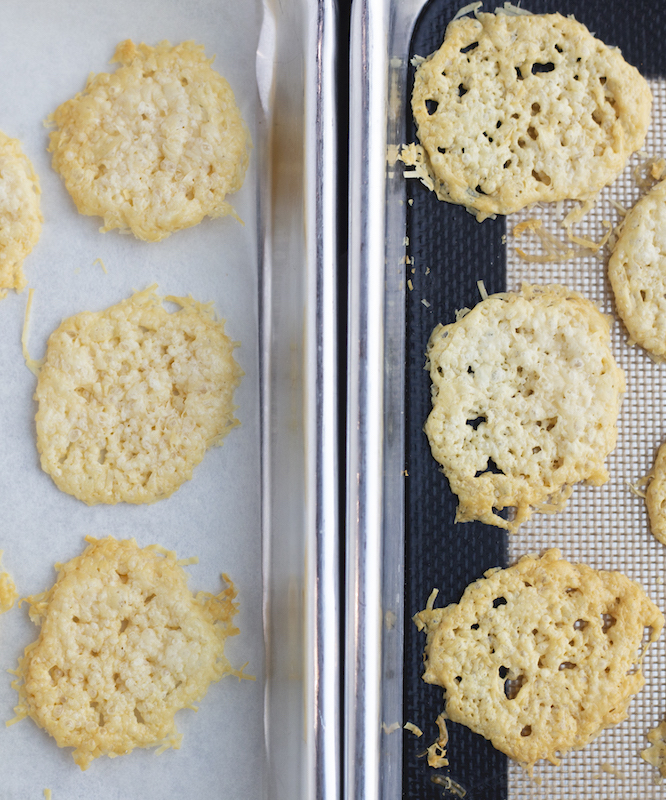
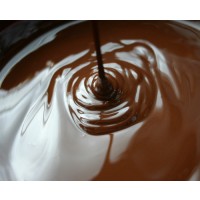
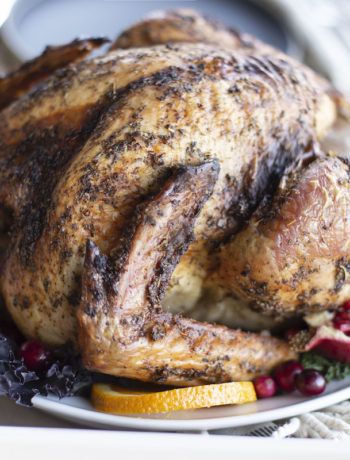
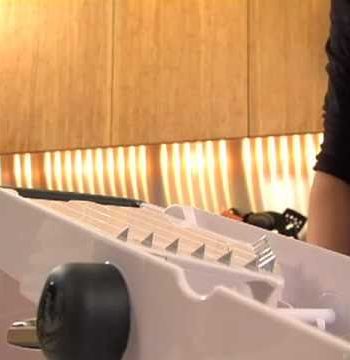
fiona liu
April 6, 2021 at 1:44 amThe role of baking paper and baking mat The tool I often use and highly recommend is baking paper. However, I don’t like rolled baking paper because it is easy to roll up and it is inconvenient to cut. I prefer to use cut-out baking paper, which can be found everywhere nowadays and can be bought in bakery stores (or buy some from your favorite bakery). If it is used at home baking pans, a piece of baking paper can be cut into two pieces for use (home baking pans are usually half the size of professional baking pans).
https://www.chinapapershop.com/product/natural-brown-greaseproof-baking-paper